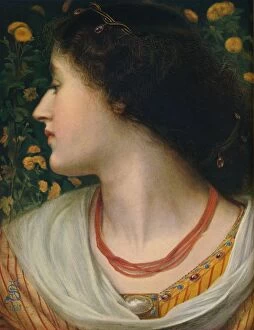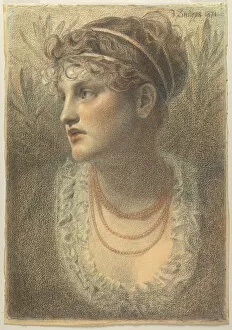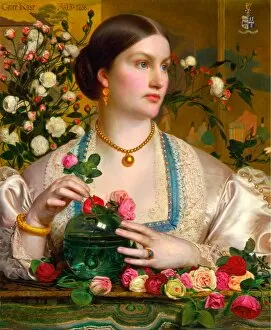Frederick Sandys Collection
Frederick Augustus Sandys was a renowned British artist known for his captivating and evocative works
All Professionally Made to Order for Quick Shipping
Frederick Augustus Sandys was a renowned British artist known for his captivating and evocative works. One of his most famous pieces, "La Belle Isolde, " created in 1862, showcases Sandys' exceptional talent for capturing the beauty and allure of women. The painting depicts the legendary character from Arthurian legend, emphasizing her ethereal charm and delicate features. In another masterpiece titled "Rosamond, Queen of the Lombards, " Sandys transports us to a different era with his meticulous attention to detail. Painted between 1850-1900 (1923), this piece portrays Rosamond as an enigmatic figure exuding strength and regality. Sandys also drew inspiration from literature, as seen in "Amor Mundi. " Based on Christine Rossetti's poem, this artwork reflects Sandys' ability to translate words into visual art seamlessly. The painting captures the essence of love and longing through its rich colors and intricate composition. Not limited to romantic themes, Sandys delved into darker subjects too. In "A Nightmare" painted on May 4th, 1857, he explores the realm of dreams and subconscious fears. This haunting image leaves viewers intrigued by its mysterious narrative. Beyond these iconic works lies a personal touch in some portraits such as "Mrs. Sandys, " where Frederick pays tribute to his mother with great tenderness during the late 1840s. Another notable creation is "Medea" from 1868; it showcases both Sandys' mastery over form and his ability to convey intense emotions through paint strokes alone. Medea's tormented expression serves as a testament to her tragic story. "Morgan-le-Fay" is yet another example of how Frederick Augustus Sandys skillfully brings mythical characters to life using vivid colors and intricate details that captivate our imagination.














